The next three posts are going to be a little different. Each will revolve around the same exercise and, while I have gotten a lot out of doing this exercise personally, I use the material I’ve created here a lot in my teaching. The goal is to show how differently a story can feel, and how the meaning can change, depending on how it is told.
So, I’ve included the exercise below, but the next three posts will mostly be comprised of the different examples I’ve made that I use in class to talk about how various text/image combinations function.
Let me know if you like this and/or find helpful. If folks are into it, I’ll work more of my teaching material into these posts.
Okay, on to the exercise (though you can skip down to the comics too, of course).
Rewrite, Redraw, Repeat
What you need:
Pencil or pen
Post-It Notes
Paper
Instructions:
Make a short comic (4-6 panels), about something simple like a place that you love or an object that has special meaning to you. Use narration and, in this first draft, be as direct and literal as you can.
Using the same text, redraw your comic a few different ways.
Here are some prompts:
Use only images of the environment with no figures.
Find images that contradict the narration in some way.
Change the setting of your story.
Something unexpected happens that complements the story.
Use abstract or shape-driven imagery.
Etc..Using the same images, rewrite your text in a few different ways.
Here are some prompts:
Rewrite your text to capture all senses but sight.
Rewrite your text from someone else’s perspective.
Etc...By now you are probably bored. Good. Boredom is healthy. Entertain yourself by rewriting AND redrawing a few more times.
Example 01: Literal
Thoughts:
It can be helpful to start a story with literal imagery if you’re drawing representationally, images that match what is happening in your text. Literal images are very easy for a reader to follow and can help establish who your characters are, where they are, what they are doing, etc...
Example 02: Environment
Thoughts:
I always find it interesting how contemplative I become when I don’t have to follow action in a visual sequence. It’s as if the narrator becomes a friend telling me a story while I sit somewhere with them and just… look around. This kind of “aspect” sequence puts me in a receptive headspace and I take the text in slowly and thoughtfully while gaining an understanding of where the story is taking place.
Example 03: Contradiction
Thoughts:
By contradicting what the narrator is saying, the narrator becomes a character. Their statements become (in this case) aspirational rather than objectively true, and they suddenly have a personality. I think that contradicting the text with the images (or visa versa) creates a little jolt of interest in a reader and makes them work a bit to connect what what they are seeing with what they are reading. I like having to work a little as a reader! In my experience, contradictions like this work best in short stretches as it can get kind of exhausting if its used all the time.
Example 04: Magical Realism
Thoughts:
I love me a bit of magical realism! When the rules of our world are broken, I get a little spike of interest as a reader. I find that this kind of sequence often reads as a visual metaphor as well.
Example 05: Abstract
Thoughts:
Look, I got a little lazy with this abstract sequence and now it feels like we’re slowly zooming out of an asteroid belt. But what’s kinda cool is that the story still makes sense with this sequence! The story becomes about taking a wider view of something, about zooming out and gaining perspective. My feeling is that, as long as there is intent and change in an abstract sequence (even a lazy one), our brains will find meaning.
And that’s it for now!
And unless the comments fill up with complaints, you’ll get more stories about rocks in your inbox next week.
xo


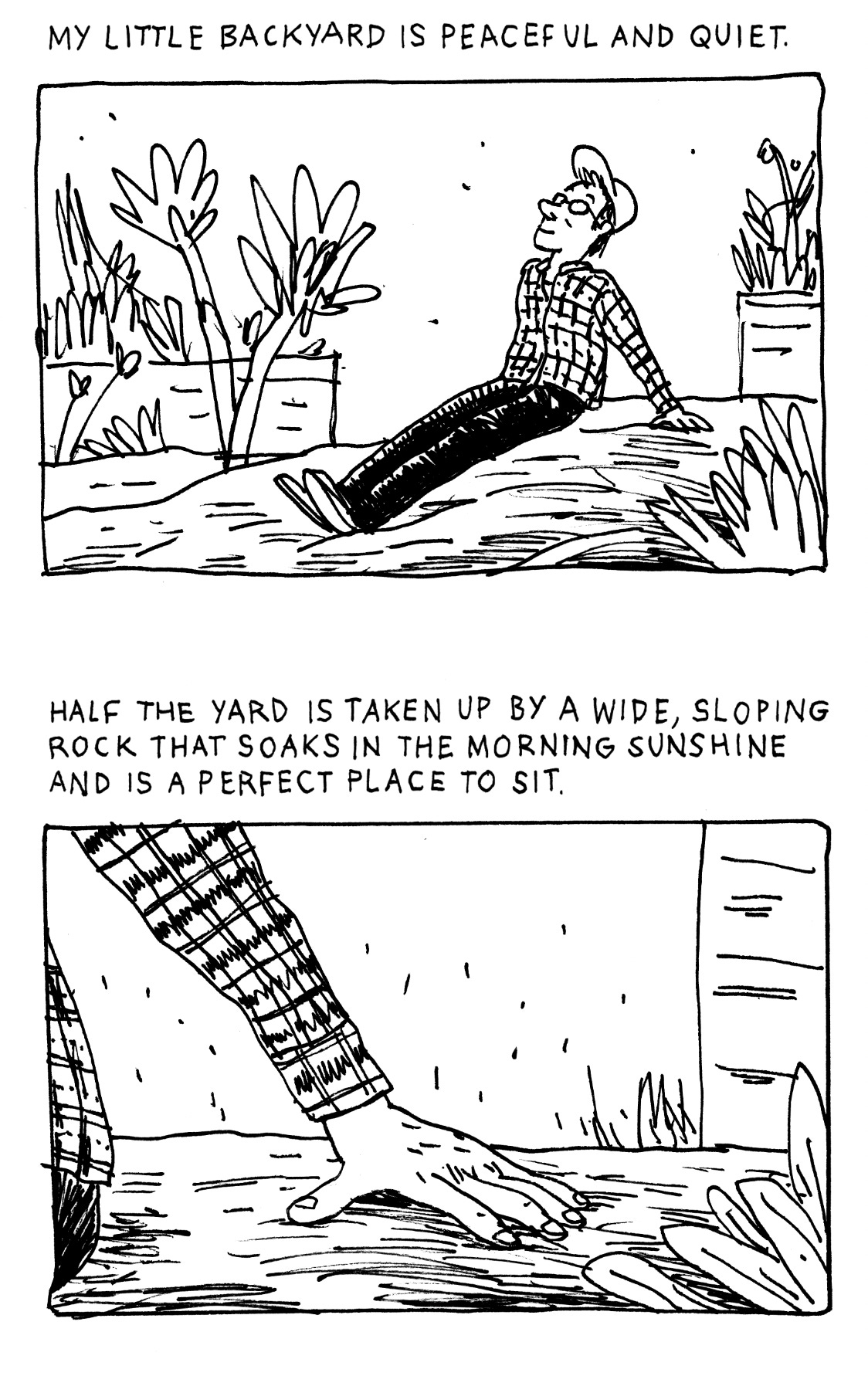
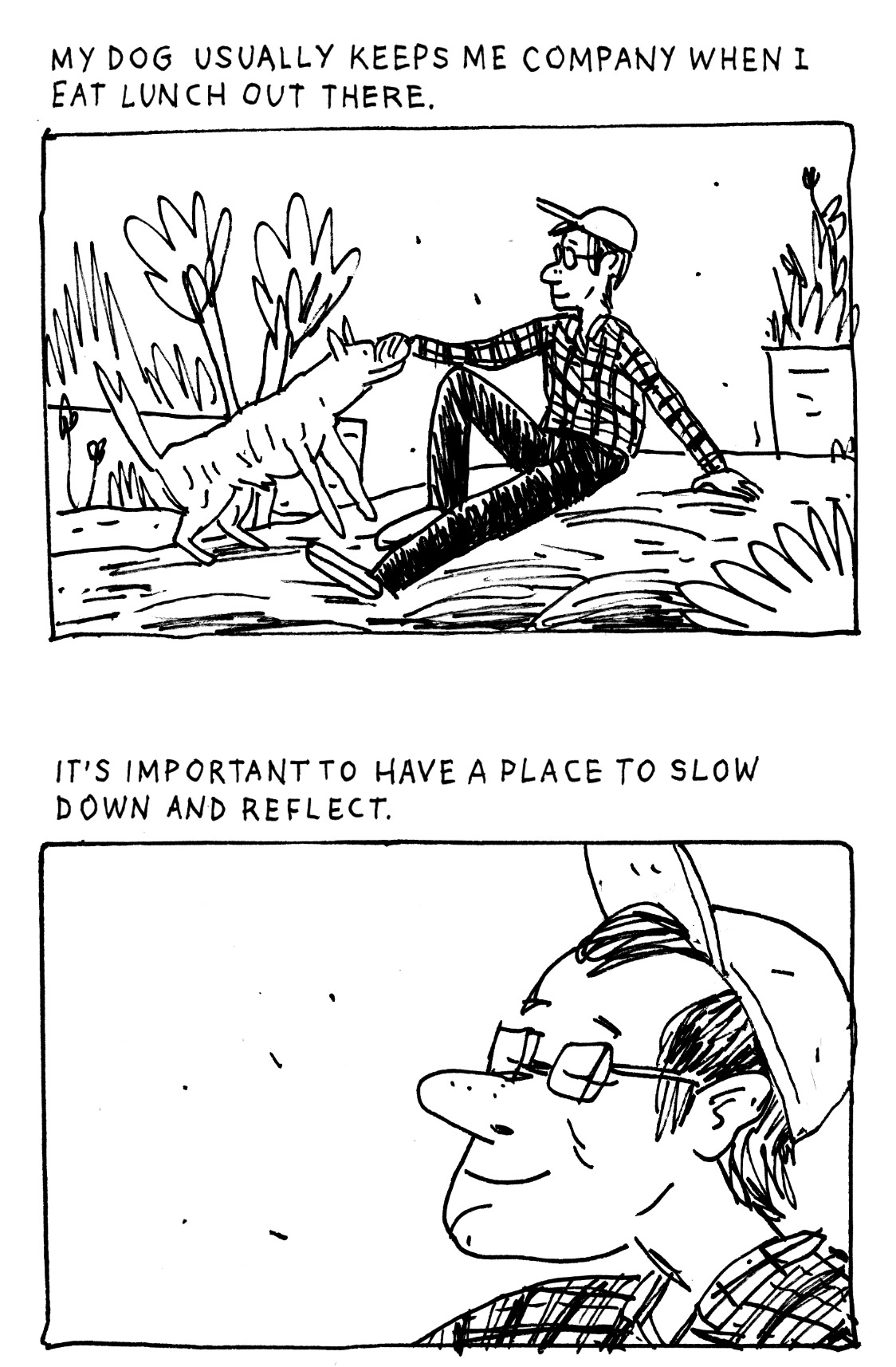
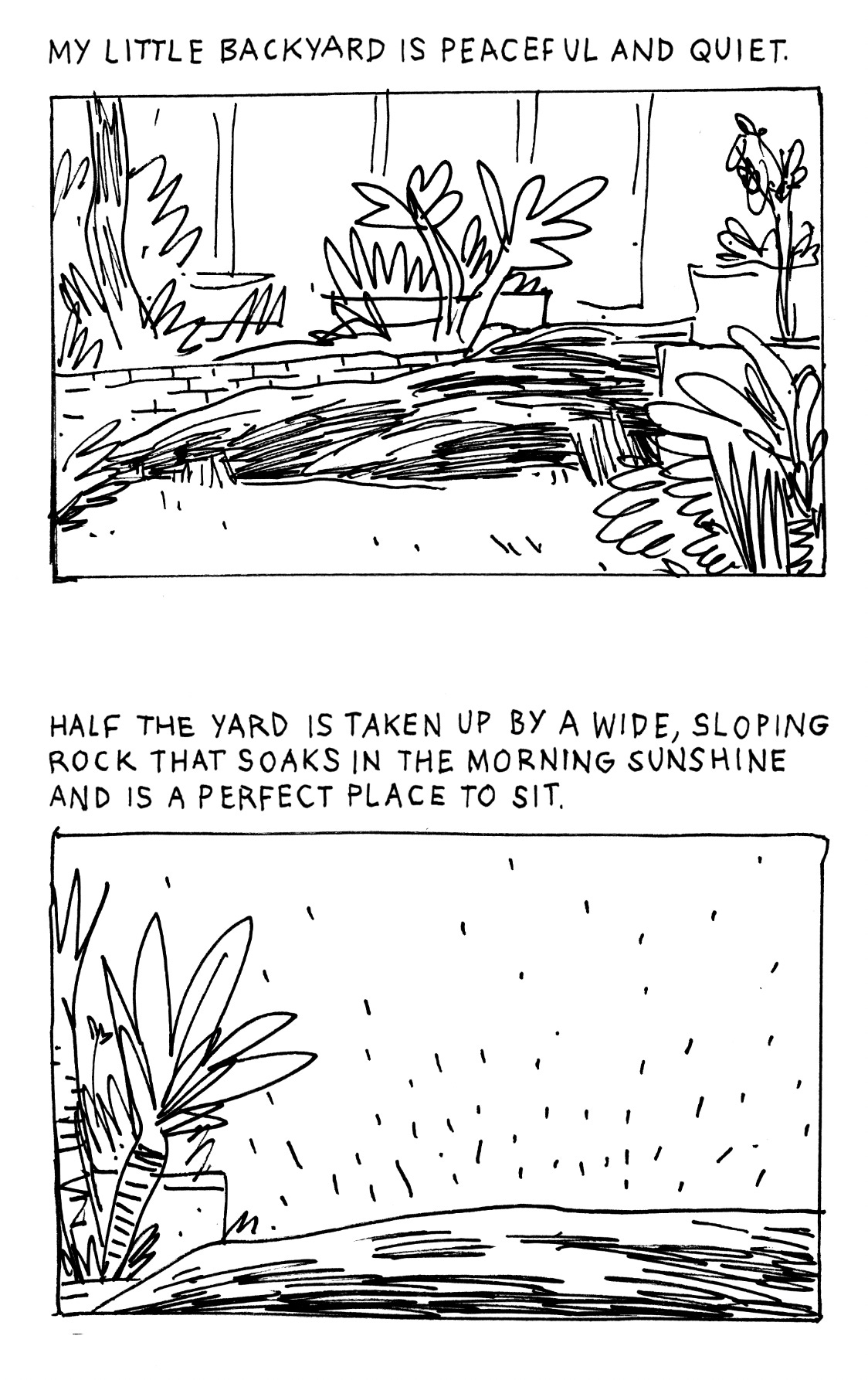
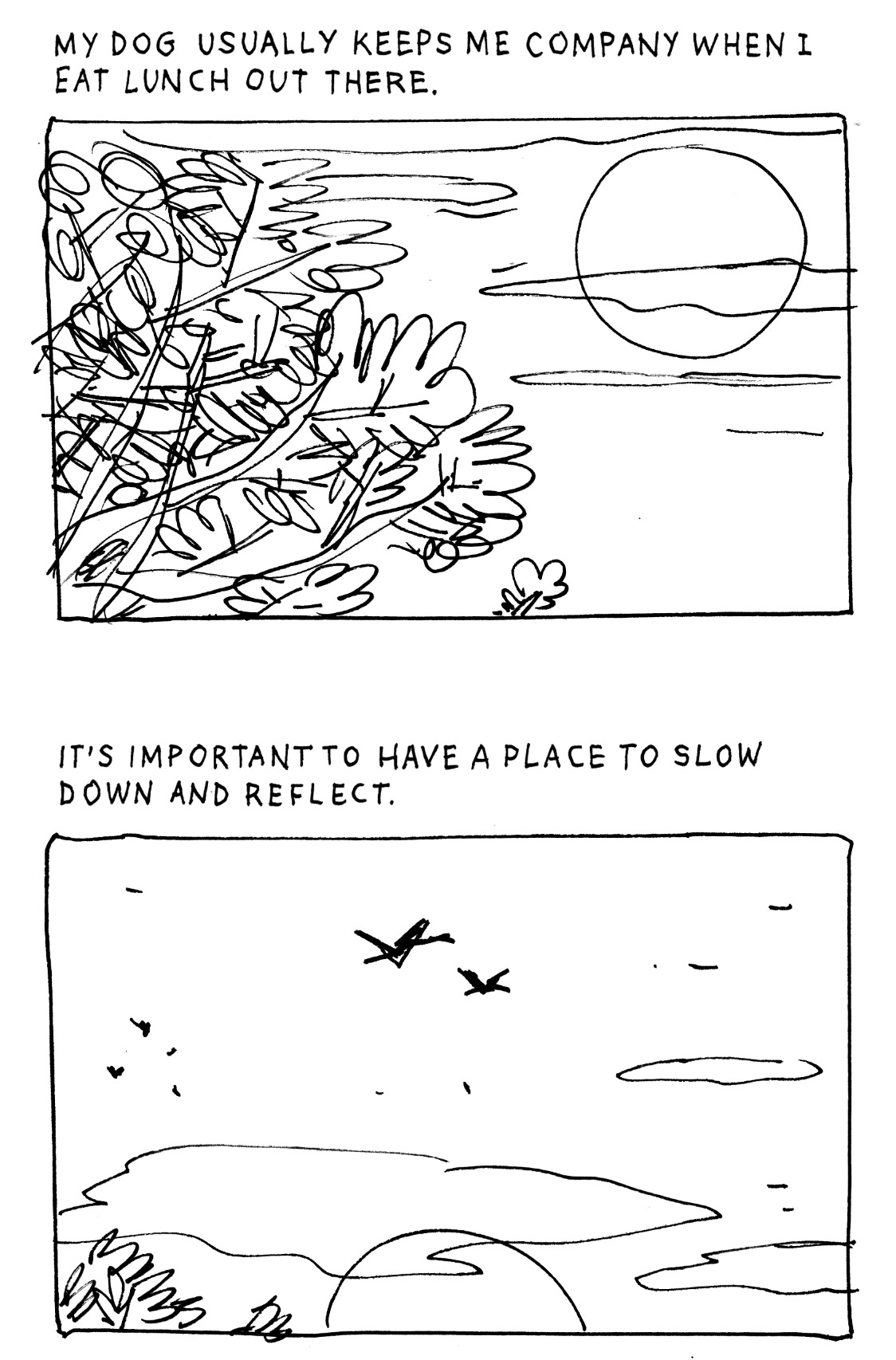
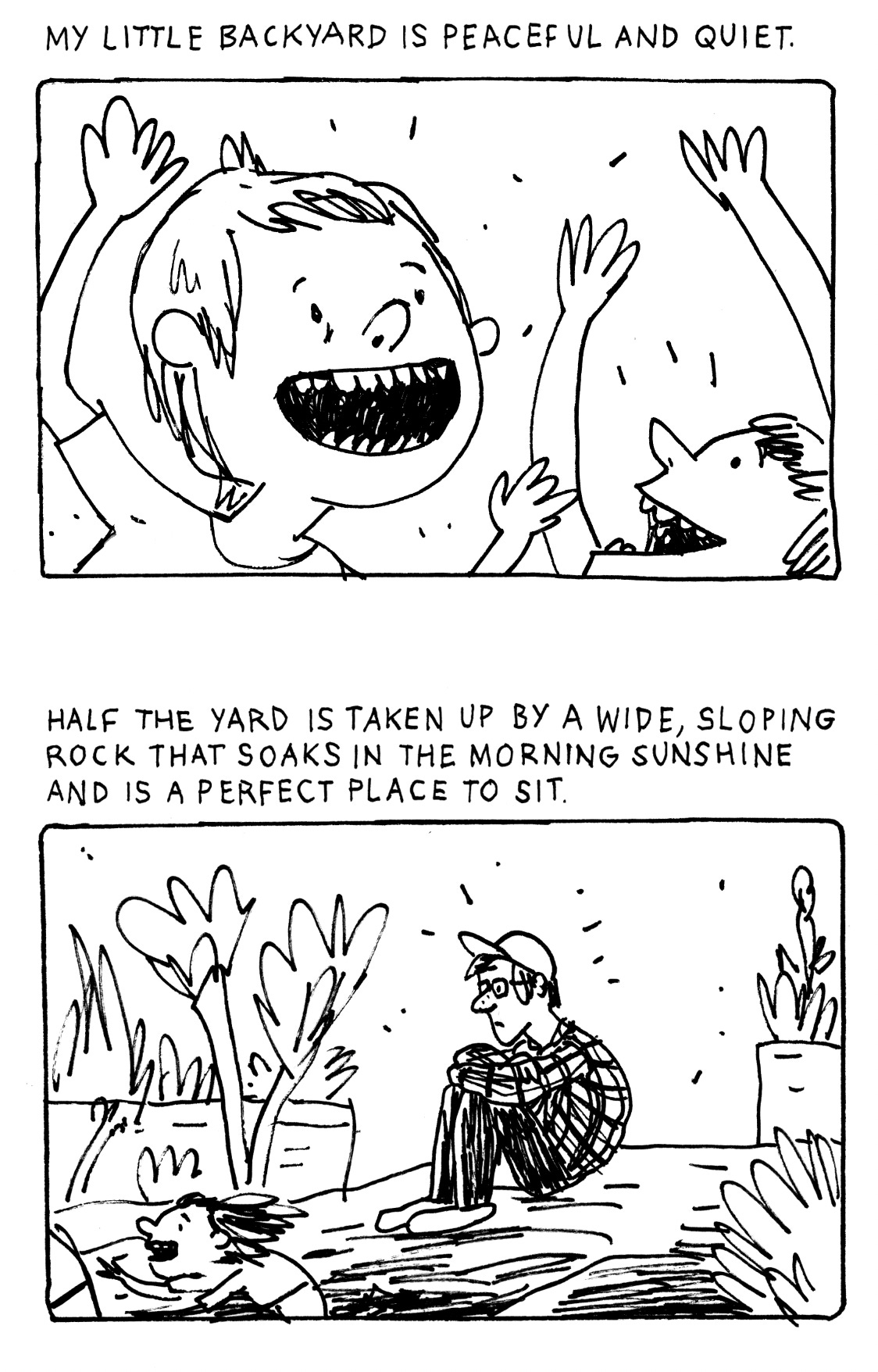
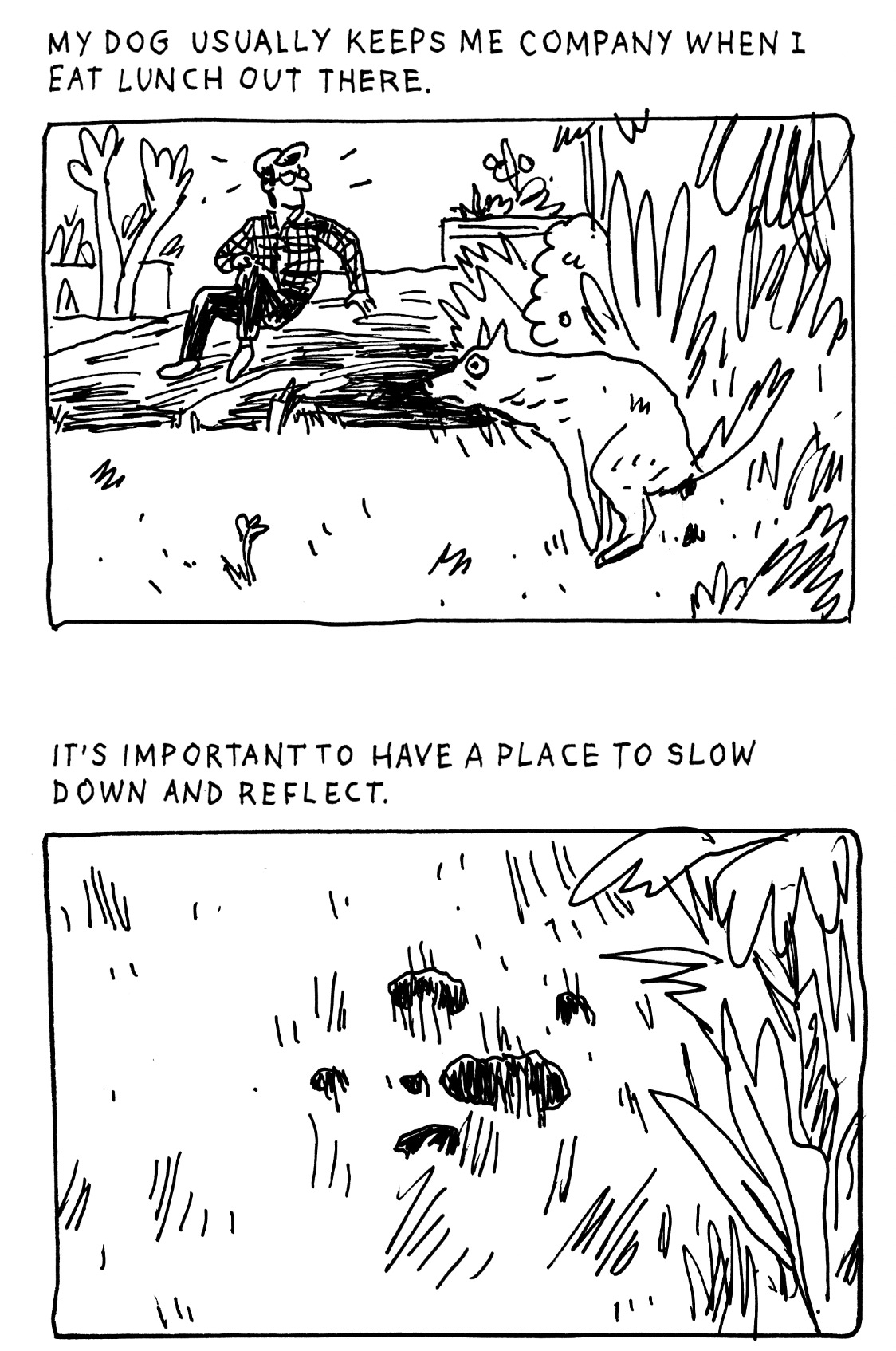
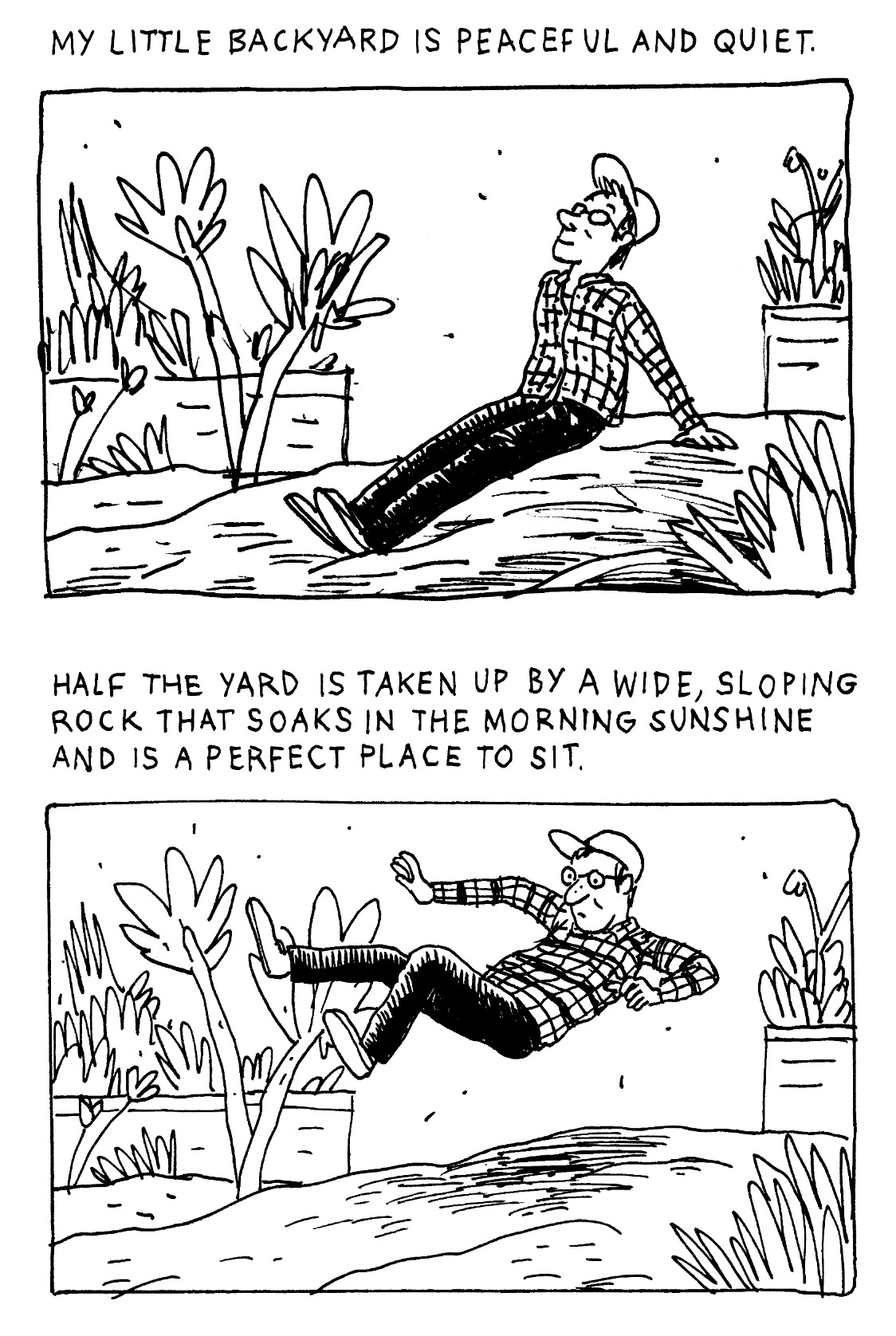
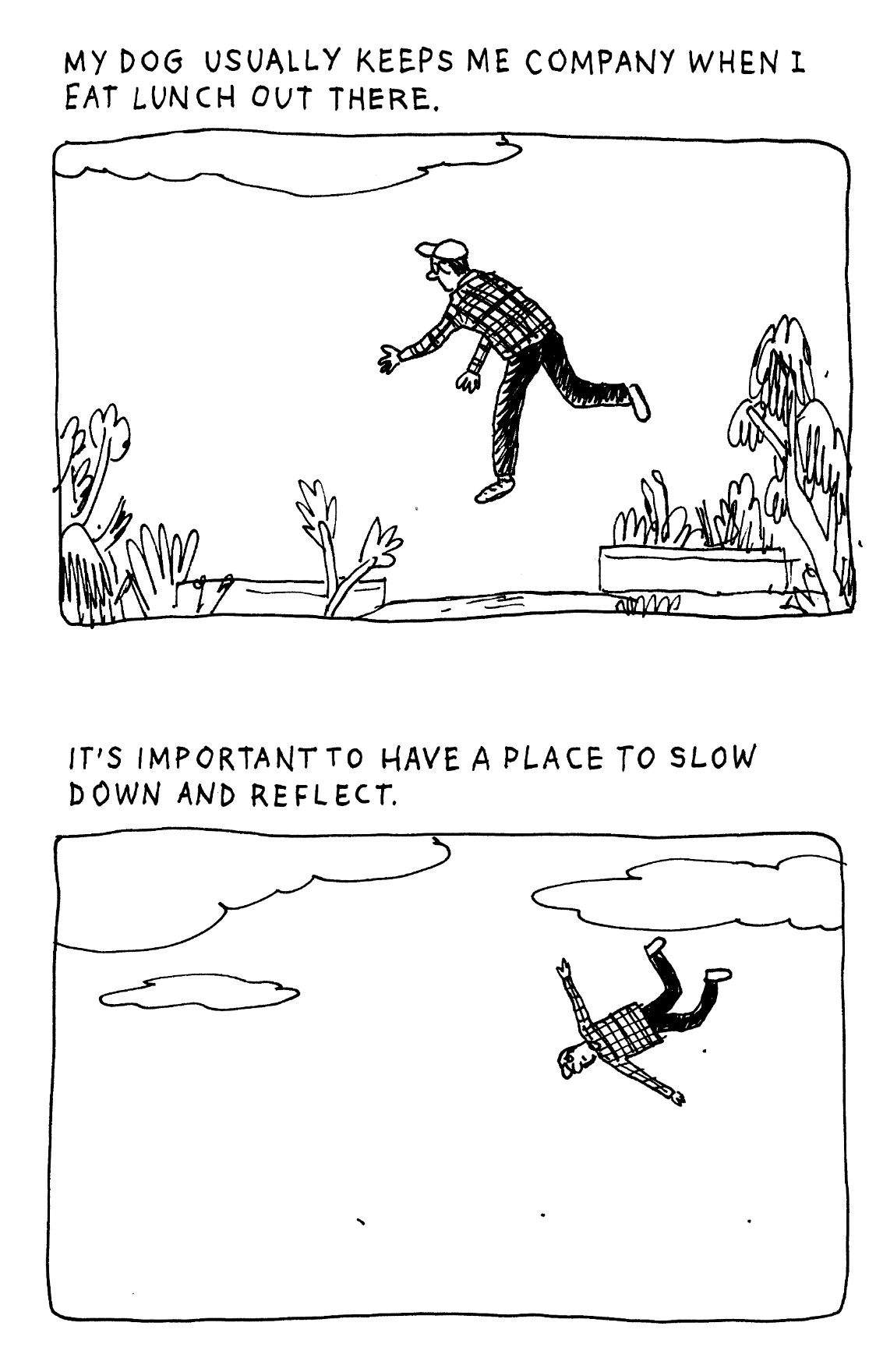
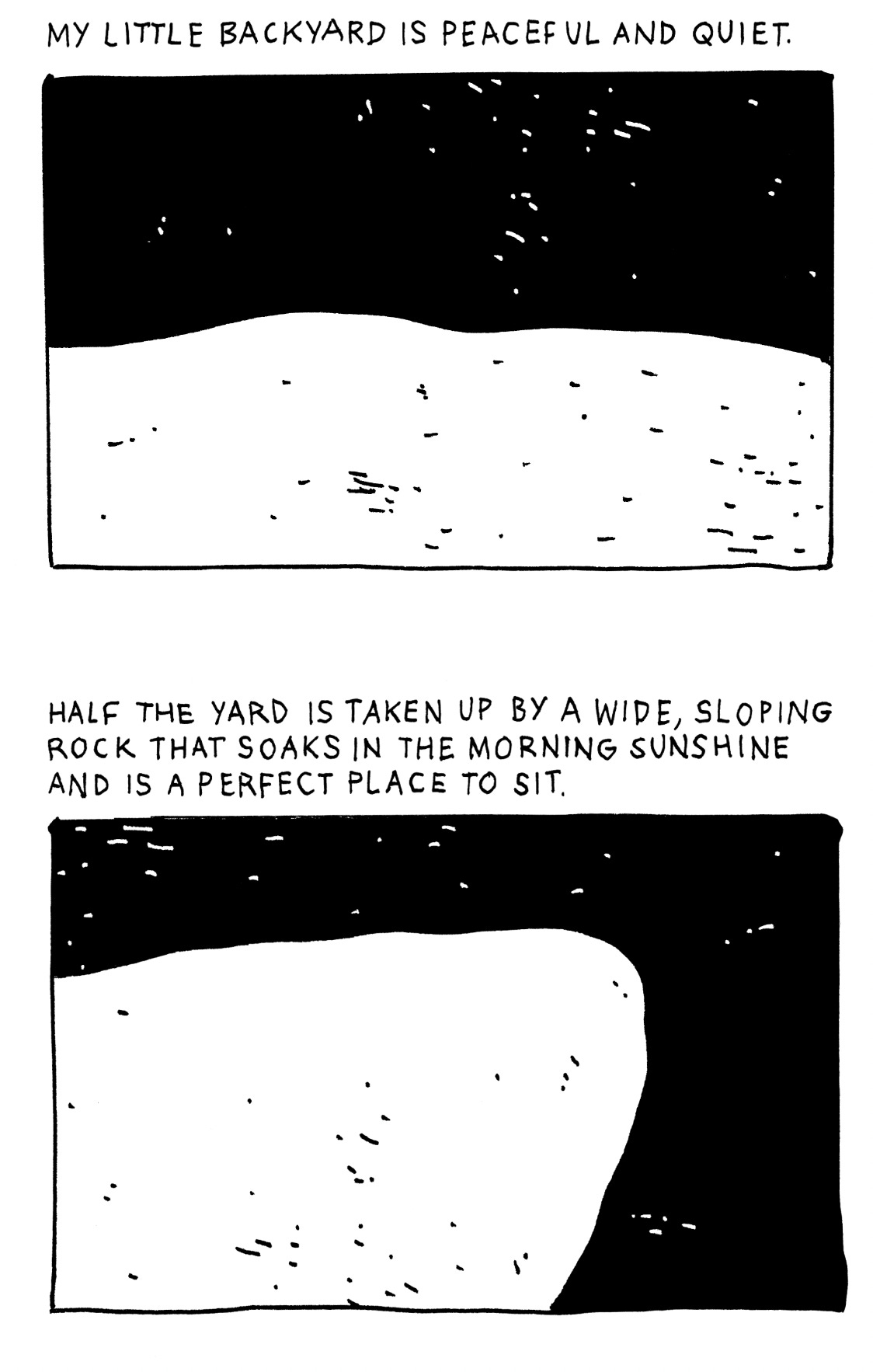
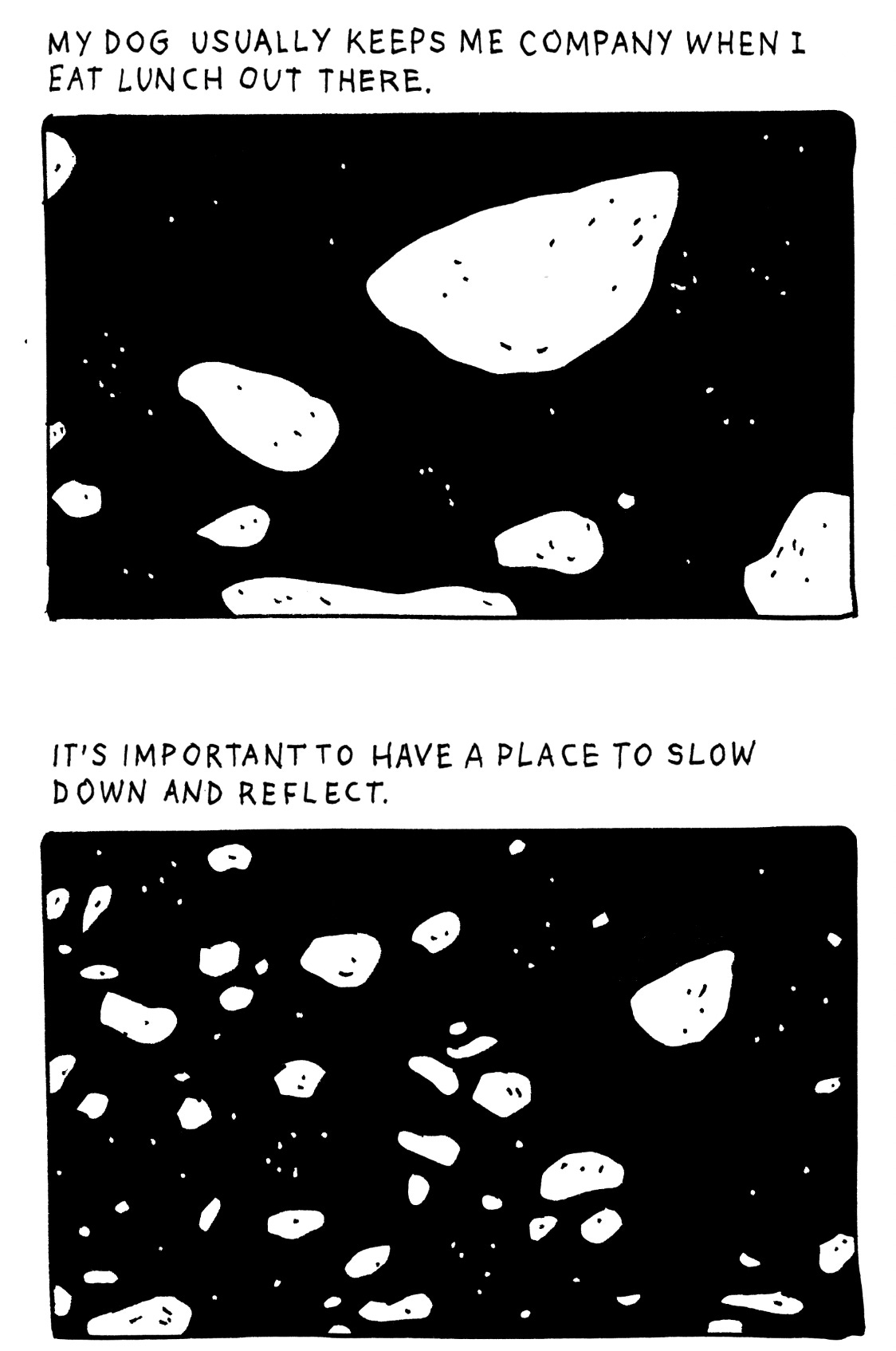
This is good. This is very helpful. I’m writing my first graphic memoir and I’m learning as I go. This is articulating and making clear what I am doing and can do. Excellent teaching. Thank you.
This is a great exercise, thank you Fionn! On another note, I’m a bit embarrassed how much I enjoyed another hilarious dog poo comic (I remain mildly obsessed with your “it’s worse if you find a cold one” piece).